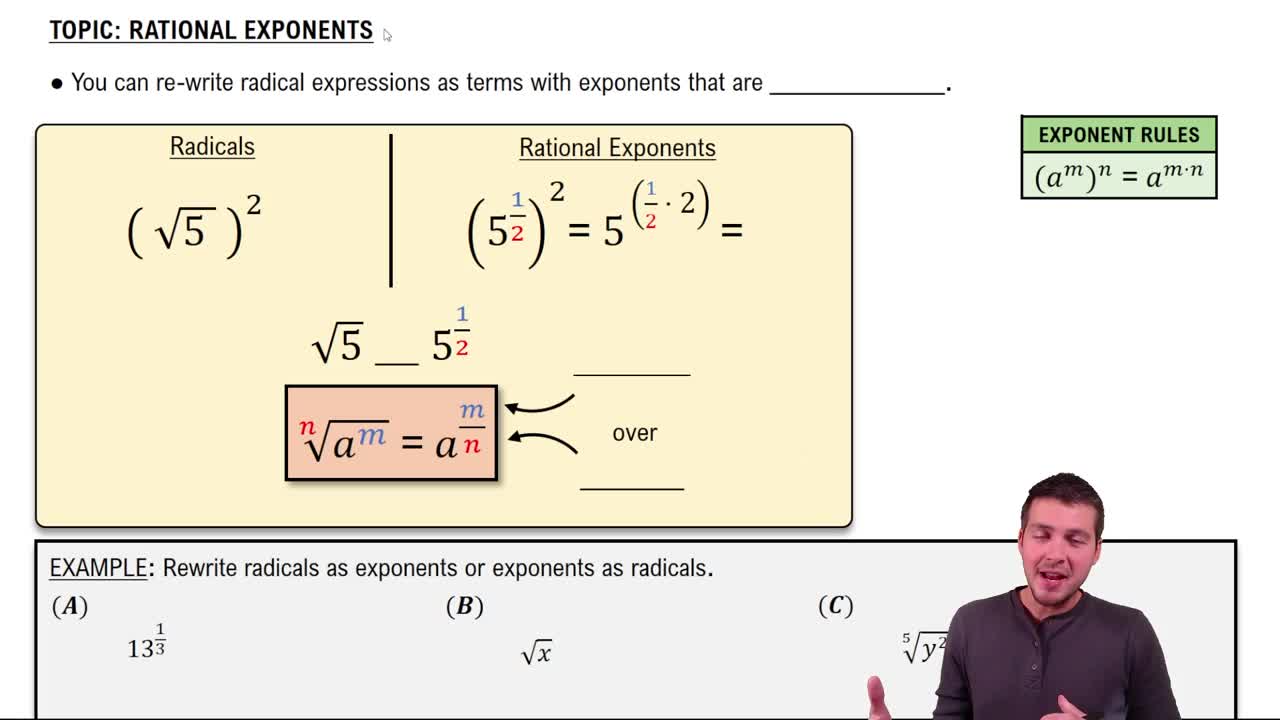Here are the essential concepts you must grasp in order to answer the question correctly.
Radical Notation
Radical notation is a way to express roots of numbers or variables using the radical symbol (√). For example, the square root of a number 'a' is written as √a. In algebra, radical notation can also represent fractional exponents, where the expression a^(1/n) is equivalent to the nth root of 'a'. Understanding this notation is essential for rewriting expressions involving roots.
Recommended video:
Exponents and Fractional Exponents
Exponents indicate how many times a number or variable is multiplied by itself. Fractional exponents, such as 1/n, represent roots; for instance, x^(1/2) is the square root of x. When simplifying expressions with fractional exponents, it's important to apply the rules of exponents correctly, including the product and power rules, to achieve the simplest form.
Recommended video:
Simplifying Expressions
Simplifying expressions involves reducing them to their most basic form while maintaining equivalence. This process may include combining like terms, factoring, and applying the properties of exponents and radicals. In the context of the given expression, simplifying means rewriting (2xy³)^(1/5) in a way that clearly shows the roots of each component, making it easier to interpret and use in further calculations.
Recommended video:
Simplifying Algebraic Expressions
 Verified step by step guidance
Verified step by step guidance Verified Solution
Verified Solution

